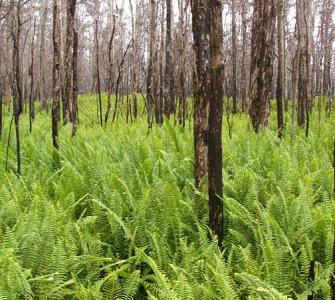In 2006 and 2007, CSF worked with The Nature Conservancy to develop an interview-based economic assessment process to assist developing countries in evaluating and addressing the impacts of invasive species.
CSF conducted economic assessments of invasive species of particular concern in Uganda, Ghana and Zambia in partnership with CABI Africa and The World Conservation Union (IUCN) as part of the UNEP/GEF project "Removing Barriers to Invasive Plant Management in Africa."
In the Ashanti region of Ghana, we found that the aggressive invasive tree Broussonetia papyrifera (Pulp mulberry) can reduce land rents by 50%, and decrease yields by 50% - 90% for important crops such as maize, cocoa and cassava.
In Lochinvar National Park in Zambia, the tree Mimosa pigra forms impenetrable, thorny thickets, reducing available grazing lands for cattle and native ungulates, forcing them to compete for food and land and increasing vulnerability to poachers. Mimosa pigra is also blamed for lower park visitation and tourism revenues, as tourists complained of the difficulty viewing animals through the dense thickets. Another important impact may be a reduction in fishing grounds via an infestation of a nearby Lagoon, an impact that may be tied to increases in poaching as fisherman search for alternative food and income.
Near Lake Mburo National Park in southern Uganda, the perennial grass Cymbopogon nardus has driven wild game from federal parklands and into competition with local livestock for grazing, severely impacted the health of the local cattle population, reduced land values, increased the presence of pests and predators in the area, and threatened the stability of the nascent poultry industry.
Invasive species threaten not only native flora and fauna, but also many local economic activities. Our work has provided communities, government and other organizations in these regions with an estimate of some of these economic impacts, helping them better prioritize management and eradication efforts.

